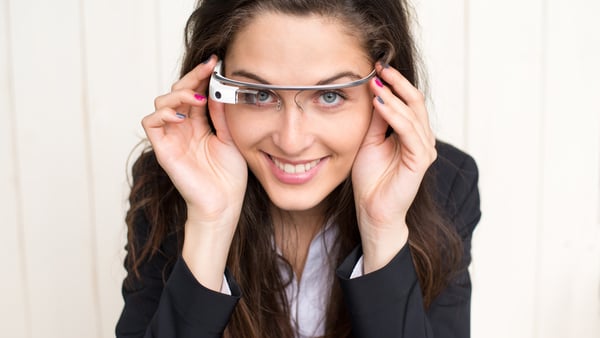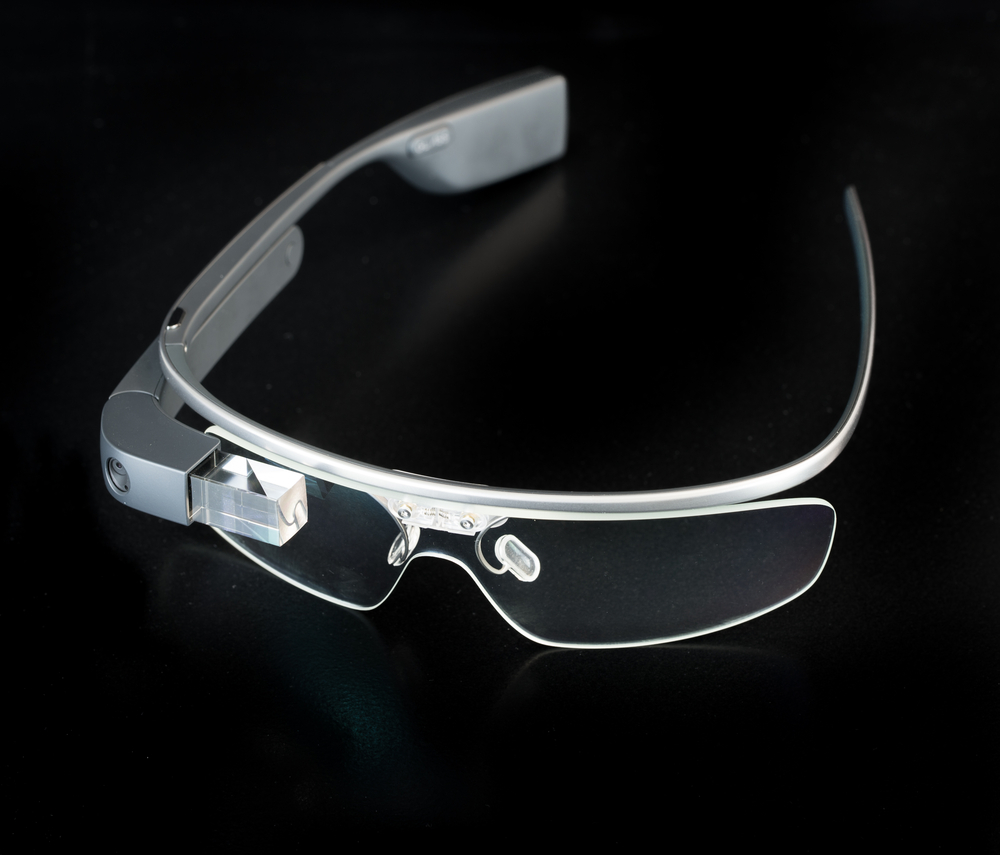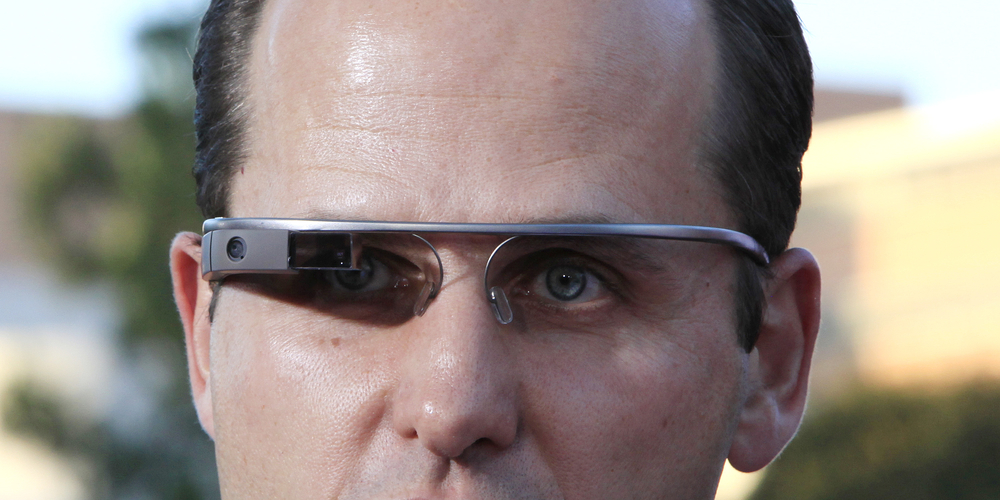Insurance Claims
Smartglasses Help Adjusters see the Future of Claims
Beau Sullivan | Property Casualty 360°
March 19, 2015
 Smartglass technology has the ability to change the way claims are adjusted.
Smartglass technology has the ability to change the way claims are adjusted.
Remember when the tools of the trade for adjusting insurance claims involved an instant camera, a voice recorder, a calculator and estimating sheets? In the days before personal computers and email, when there were no mobile phones, if you wanted to make a call you dropped a dime into a pay phone, then hoped someone on the other end would pick up.
“Adjuster notes” were hand-written. Changing reserves meant filling out a form in triplicate and waiting days for processing. There were no smartphones, Internet connections or wearables. The most futuristic things in our collective consciousness were a time-traveling DeLorean and reruns of The Jetsons.
Years passed and technology began to evolve. In the early 1990s, the first PCs made their way onto adjusters’ desks. The Internet was born, dot coms were booming and email was everywhere. As the ‘90s faded into the millennium, laptops were the new norm and flip phones evolved into smartphones, which became smaller while the workloads became larger. Small, localized claims offices became mega claim centers.
Today, technology continues to expand at an exponential rate. It is not a question of ifsomething can be developed, but rather when will today’s trendiest gadget make a significant impact on our industry? Wearables are one of the hottest trends sweeping the globe, and Google Inc.’s wearable computing device, smartglasses, are among the best known. Like their name implies, Google Glass looks almost like any other pair of glasses—but pack a punch of technology in their right arm. A tiny transparent screen peeks into the peripheral view and lets wearers see text, pictures and video streamed from the Web or stored locally. A video camera and microphone allow Glass to covertly capture the sights and sounds of the surrounding world, while voice commands and head tracking sensors enable hands-free interactions.

All this technology comes at a price—the Google Glass Explorer Edition costs $1,500—a rather hefty price tag for souped-up spectacles. But the steep price did not deter die-hard techies from wanting to flaunt the newest fad. After its introduction, Google Glass rode the crest of the wearable high-tech wave and Google reportedly sold out within 24 hours the first time the device went on sale to the masses.
Then in January 2015, Google announced they were ending the Glass Explorer program "so we can focus on what's coming next," the Glass team wrote in a Google+ post. This move not only makes the first edition of Glass an instant classic and reinforces that there will be more to come, but opens the door for the next generation of smartglasses to pick up where Glass leaves off. One such possibility is the recently announced HoloLens from Microsoft. HoloLens displays life-size, 3D holograms. Wearers see these virtual objects as if they were actually in the world around them, creating what is referred to as “augmented-reality” (AR). Microsoft is betting big on the HoloLens, which runs their new OS Windows 10.
Venture firms agree that virtual- and augmented-reality will emerge as the next big computing platform, and they have invested more than $1 billion in this area so far. Also entering the arena is the Sony SmartEyeglass developer edition set to go on sale in the UK March 2015. Sony claims its device creates “true augmented reality” with bells and whistles that include an accelerometer, gyroscope and electronic compass. Unlike Glass’s full-color display, the Sony smartglasses feature a 419 x 138 resolution monochrome display in bright green.
Whether it is the next generation Google Glass, Microsoft HoloLens, Sony SmartEyeglass or some other device that finally shows you the information exactly when you need it, one thing is quite clear—smartglasses are here to stay. What impact will smartglasses make on our industry when they become the norm? Let’s explore.
For starters, smartglasses could provide a tremendous lift to the most mobile workers—adjusters in the field. Casualty investigations require several steps that smartglasses could potentially consolidate. These include coverage, liability and damage investigations, evaluation, settlement and recovery.
In the purest sense, smartglasses could assist adjusters in handling every aspect of the claim, which will improve quality and consistency over the often bifurcated processes used by carriers today. To demonstrate, let’s walk through a hypothetical scenario of an adjuster investigating an auto accident in the not-too-distant future.

“OK glasses, adjust this claim.”
For starters, coverage verification could become instant, as the adjuster could simply snap his fingers and recite the policy number. When integrated with the claim management system, his smartglasses could display the policy details for the adjuster to see. With coverage verified, it would be time to adjust the damaged vehicle. Pre-technology this required specialization. With smartglasses, simply looking at a damaged vehicle from various angles could enable the estimating software of the future to accurately generate an estimate and might even allow for the electronic transmission of funds from carrier to claimant.
Liability investigations could be bolstered by the ability to clearly visualize what happened in the accident. After receiving the telemetry data from the insured and claimant vehicles, the adjuster could go to the scene and use his smartglasses to project images of the moving vehicles into the intersection, virtually recreating the accident and observing it as if he were actually there at the time it happened.
Let’s assume this claim involved the insured making a left turn in front of the claimant. In today’s adjusting model, cases such as this are routinely settled at 100% against the party making the left turn. In fact, a mere 3% of all claims are settled with comparative negligence. The reality is that most claims do involve shared fault, validated by jury verdicts that assess comparative negligence more than 50% of the time. In our future scenario, however, using smartglasses to see the virtual reality could allow these claims to be settled more effectively out of court.
Injury investigations could also benefit. Once an interview was underway, the adjuster might only need to gaze into his smartglasses while questions derived from his statement guide streamed before his eyes, which could ensure that all appropriate information was gathered in sequence. The adjuster of the future might even be able to view prior claims history, criminal records, known associates and other public records. If the adjuster were visiting a plaintiff attorney or medical provider, simply sharing a name or tax ID number could allow for immediate determination of licensure status and any prior disciplinary action. The adjuster might also be able to better capture claimant activity via the inconspicuous surveillance capabilities smartglasses could provide.
When it came time to evaluate a bodily injury claim, smartglasses could integrate with the appropriate tools to display re-priced medical bills and estimated pain and suffering. Settlements tracked across the company could be displayed, enabling the adjuster to know what this type of claim would typically settle for based on injury characteristics and venue.
Smartglasses of the future could also have a profound impact on SIU, potentially enabling investigators to better conduct examinations under oath, as well as clinic inspections, while capturing every single detail.
In the litigation process, smartglasses might transform how depositions would be conducted. By capturing and analyzing every word and movement of the claimant, they have the potential to dramatically change how trials would be conducted and what juries might be able to see — from the nervous answers to the sweat beading on a brow. Just think of the potential impact this could have if played out for a jury.
Hindsight is 20/20
We’ve come a long way since the days of instant cameras and voice recorders. At the rate technology is advancing, the changes we’ve seen over the last 20 years will pale in comparison to what we are going to see in the next 20. While it may be hard to justify arming an entire adjusting staff with smartglasses right now, it’s easy to imagine that those who experiment with these emerging tools may not only see improved productivity, claims investigations and outcomes—they also might catch a glimpse of the future.
The content of this article is intended to provide general information and as a guide to the subject matter only. Please contact an Advise & Consult, Inc. expert for advice on your specific circumstances.
SOURCE: www.propertycasualty360.com
